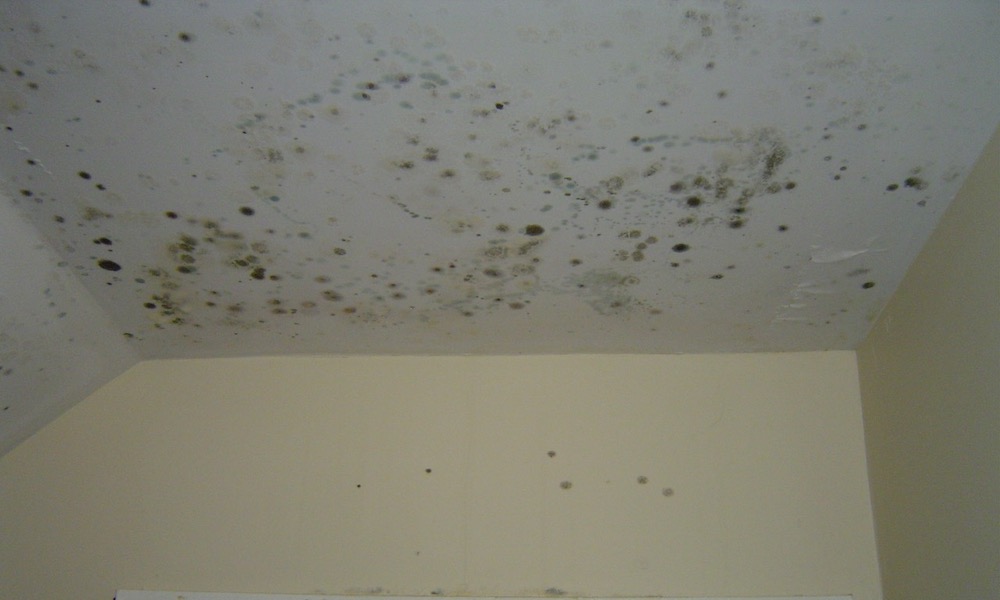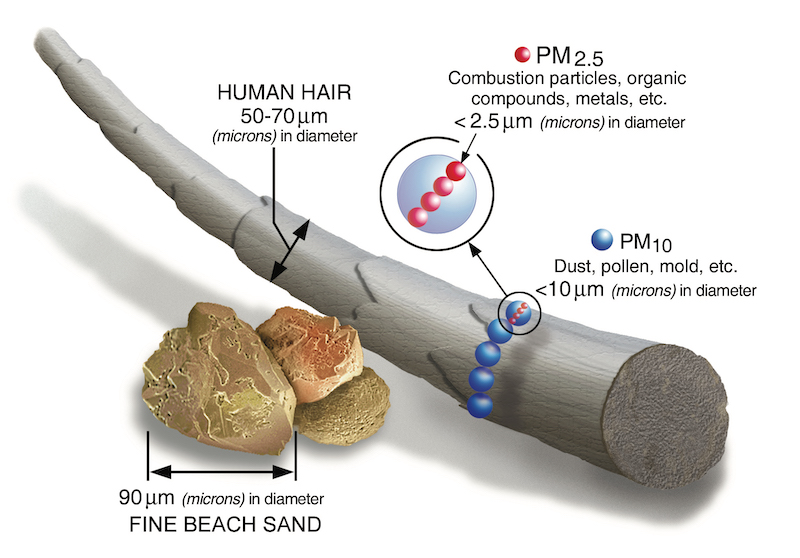The Big Picture of Indoor Air Quality – Excerpt

The quote below is a classic from the 1893 book, Ventilation and Heating, by John Shaw Billings. The imagery of wearing someone else’s dirty underwear may shock you, but Billings makes a compelling point. We essentially do something worse whenever we take a breath indoors.
Most civilized men and women are unwilling to put on underclothing that has just been taken off by another person or to put into their mouths articles of food or drink that have recently been in other people’s mouths but they take without hesitation into their lungs air that has just come from other people’s mouths and lungs or from close contact with their soiled clothing or bodies.
~ John Shaw Billings
It’s not just air recently expelled from other people’s lungs we should worry about, though. Indoor air is often more polluted than outdoor air. It’s a soup of particulate matter of various sizes, volatile organic compounds, skin flakes, dust mite carcasses, mold spores, and more. And we suck all that nasty stuff into our lungs with every breath.
The average American spends 87% of their time indoors, making the quality of their indoor air really important. So, let’s look at the big picture of indoor air quality today. We’ll start with the bad stuff in a home’s air and where it comes from, then highlight the three best ways to ensure good IAQ, and finish with a step that is just now coming into its own for homes: monitoring indoor air quality.
What’s in your air?
Often when you look up indoor air pollutants, you find lists like this:
- Carbon monoxide (CO)
- Radon
- Ozone (O3)
- Volatile organic compounds, or VOCs
- Nitrogen dioxide (NO2)
- Secondhand smoke from cigarettes (SHS)
- Bioeffluents (including carbon dioxide)
- Particulate matter
- Asbestos
- Viruses and bacteria
- Mold
- Allergens
In fact, that list is a rearranged version of the list in my article about which indoor pollutants matter most. But let me break it down further. That list contains two different types of airborne pollutants: Particles and gases. The first five pollutants in the list are gases. Numbers 6 and 7 are mixtures of particles and gases. The last four are particles. It’s good to think of them separately because we deal with them in different ways, as you’ll see below.
With particulate matter, the type of particle matters. Asbestos can do great damage in the lungs. Viruses and bacteria can spread disease just by getting into the upper respiratory system. Mold and allergens cause reactions in people susceptible to those pollutants.
But sometimes it’s just the size that matters. Particles that float around in the air might otherwise would cause no ill effects. But if they’re small enough, they can increase breathing problems, aggravate asthma, and reduce lung function. The really small ones can even get into the bloodstream, where they can lead to irregular heartbeat, nonfatal heart attacks, and premature death for people who already have heart or lung problems.

See the full article (and more) at Green Building Advisor
What you’re reading here is an excerpt of my full article. The sections you can’t see here are available at Green Building Advisor, and they are:
- Where do the pollutants come from?
- Three ways to ensure good IAQ
- Monitoring a home’s IAQ
- The big picture of IAQ
Green Building Advisor is running a series on indoor air quality from now through June, and the full version of this article is the kickoff piece for the series. It’s currently free but will go behind their paywall at the end of Friday, 22 April 2022. Get it while you can!
Of course, you can become a GBA Prime member and have access to all their stuff. In addition to lots of great articles, they have an extensive library of details. Their details library includes vented or unvented cathedral ceilings, roof/wall connections for various wall and ceiling types, foundation water management, and more. If you’re a builder or remodeler—whether you’re doing it for yourself or others—this collection may well justify the cost of the GBA Prime membership. Also, Martin Holladay still writes his excellent column, Musings of an Energy Nerd, twice a month.
Or you could join just for the articles in the IAQ series and then cancel later. Other people who will be writing articles for it are Kristof Irwin, Jon Harrod, Shelly Miller, PhD, Monica Rokicki-Guajardo, Nikki Krueger, John Semmelhack, and Cramer Silkworth. If you’ve been wanting to learn more about indoor air quality, this is a great way to do it.
Whatever you decide about that, you have a little bit of time to read my full article for free at GBA.
Allison A. Bailes III, PhD is a speaker, writer, building science consultant, and the founder of Energy Vanguard in Decatur, Georgia. He has a doctorate in physics and writes the Energy Vanguard Blog. He also has a book on building science coming out in the summer of 2022. You can follow him on Twitter at @EnergyVanguard.
Related Articles
Which Indoor Air Pollutants Matter Most?
Why You Probably Need an ERV, Not an HRV
3 Ways to Get Cleaner Indoor Air With Filtration
Carbon Dioxide and the Air You Rebreathe
How to Make a Good High-MERV Filter Even Better
Comments are moderated. Your comment will not appear below until approved.
This Post Has 6 Comments
Comments are closed.

WONDERFUL quote! I’ll have to remember that. So here’s a question for you. If we help clients build super-energy efficient low-load homes, and we don’t need much heating & cooling BTUs, BUT we need a minimum of 4 ACH – preferably directed & cleaned through MIRV filters – how do you do that? If HVAC tonnage offers around 400 CFM per ton, you need lots of tonnage to achieve 4ACH, yet by code I’m told you are not allowed to oversize a unit by more than 15%. So for a 4,400 sqft home we may only need 2 tons for H&AC, but maybe 6-8 tons for V.
Charles, where are you getting this minimum 4ACH from, and are you referring to internal air changes (i.e., recirculated airflow)? Your last sentence “V” implies you’re referring to ventilation air changes, in which case, 4ACH is nonsense.
Considering this is pre-COVID too just shows you how much still needs to be done. At least the pandemic made people a little more aware of the air inside and out.
I am having no luck finding the CO detectors you recommend. Any other suggestions?
Thanks, Kelly
Kelly: Yes, see this article:
https://www.energyvanguard.com/blog/Don-t-Compromise-Get-a-Low-Level-Carbon-Monoxide-Monitor
Thanks, I found it with that link – I think the first time I must have somehow gotten to an old website that showed everything out-of-stock.
Both our moms have gas furnaces and water heaters in old houses so I am going to see what the monitor says.